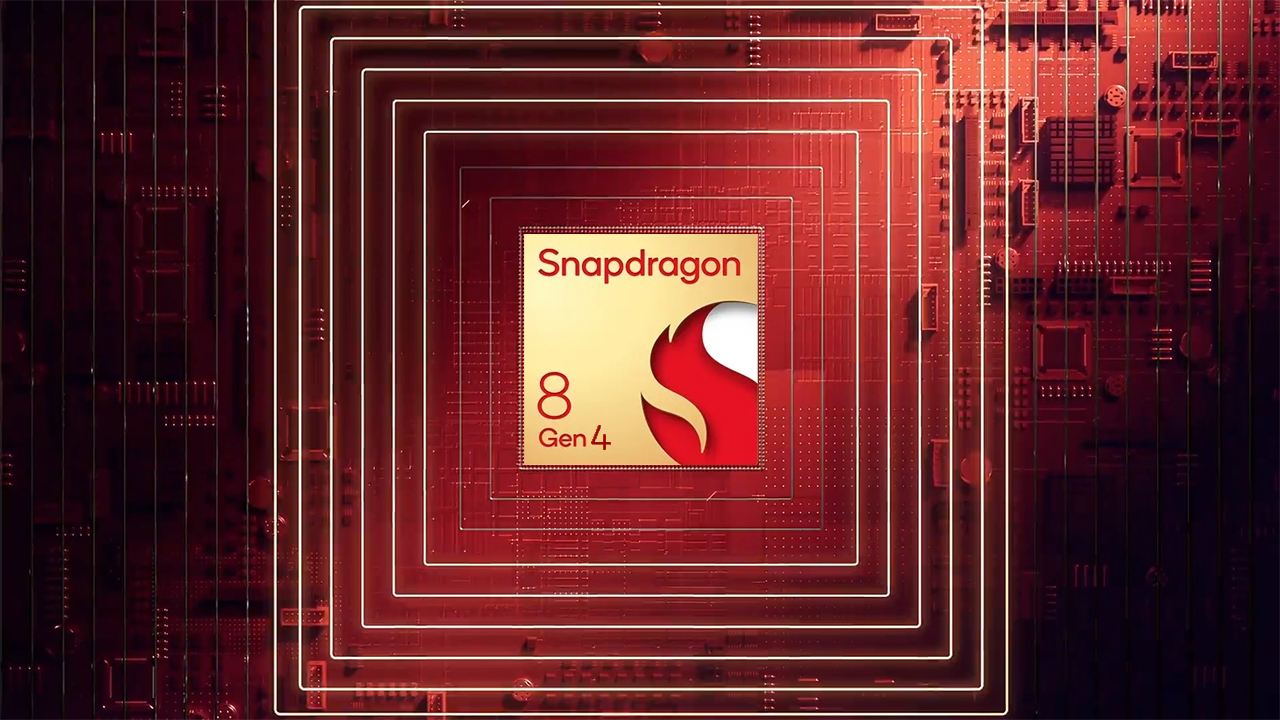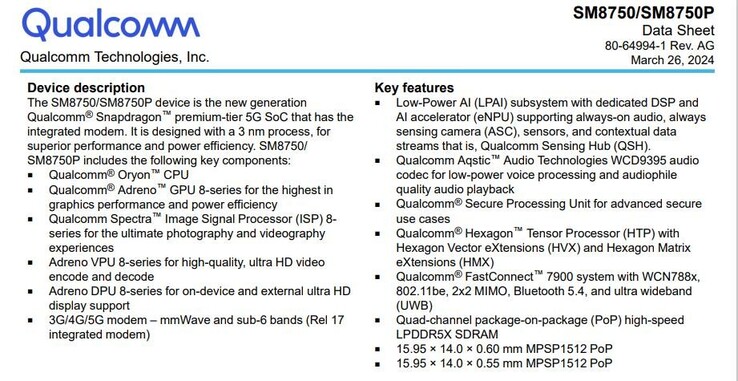

The Snapdragon 8 Gen 4 is over the horizon, with Qualcomm set to launch the new SoC at the Snapdragon Summer Summit planned for October. But it seems that the company couldn't save the important pieces of information from being leaked, as months before the official unveiling, an official-looking datasheet slide has just emerged.
Per the alleged datasheet slide, two variants will be available: SM8750 and SM8750P. Among the two, the first is likely the standard Snapdragon 8 Gen 4, while the "P" on the second presumably stands for "Performance." The latter could be similar to the "AC" variants of past SoCs, which were exclusive to Samsung Galaxy phones at launch (256 GB S24 Ultra curr. $1,049.99 on Amazon).
If that stands true, the SM8750 will be powering the early Android smartphones from Xiaomi, Oppo, Vivo, and others, while the SM8750P will be inside the Samsung Galaxy S25 series. Another interesting aspect of the leaked datasheet slide is that it states that the Snapdragon 8 Gen 4 will use Oryon CPU cores.
They are in-house cores, and Qualcomm has already introduced Oryon cores in the Snapdragon X series chipsets. These custom cores inside the upcoming Snapdragon SoC could mean better battery life. However, it's unclear whether all the cores of the 8 Gen 4 will be Oryon cores or whether there will be a mix of ARM Cortex cores.
The leaked slide also highlights that the new chipset will bring a new Qualcomm Adreno 8-series GPU, said to deliver better power efficiency and performance than the Adreno 750 found in Snapdragon 8 Gen 3. There's mention of support for quad-channel LPDDR5X RAM too.
Other notable aspects include the "Low-Power AI" subsystem that's said to be for always-on uses, support for mmWave and sub-6 GHz 5G, Bluetooth 5.4, WiFi 7, and UWB. Worth mentioning an early Geekbench entryrevealed that the Snapdragon 8 Gen 4 can deliver 30% better multi-core and 35% single-core performance than the 8 Gen 3.

The above is the detailed content of Official-looking Snapdragon 8 Gen 4 datasheet slide leaks ahead of launch. For more information, please follow other related articles on the PHP Chinese website!




